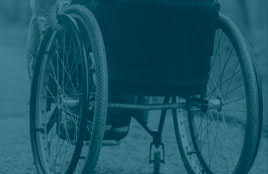By Mitchell J. Shore and Emily B. Marks
This article originally appeared in the Legal Intelligencer Auto Law Supplement on June 5, 2012.
Police chases are glorified in Hollywood with daring stunts and spectacular crashes and end with the bad guy in handcuffs. In real life, police chases rarely have happy endings. Recently, residents of the Philadelphia area were repeatedly subjected to the disturbing video news clip of a police chase accident that resulted in the death of a 36-year-old father, Danny Roman. Roman’s vehicle was struck as Gregory Alston fled police in a high-speed chase through North Philadelphia. Roman’s 4-year-old son, Jaden, and Jaden’s mother, Jenny Santiago, were also in the vehicle but survived the crash.
This article discusses liability for injuries to uninvolved persons, like Roman, arising from police pursuits of fleeing drivers under the Pennsylvania Political Subdivision Torts Claim Act (PSTCA), 42 Pa. C.S.A. §8541 and the Pennsylvania Sovereign Immunity Act, 42 Pa. C.S.A. §8541.
The Pennsylvania Motor Vehicle Code defines a pursuit as “an active attempt by a police officer operating a motor vehicle to apprehend one or more occupants of a motor vehicle when the driver of the vehicle is resisting the apprehension by maintaining or increasing his speed or by ignoring the police officer’s audible or visual signal to stop.” Police departments in Pennsylvania are required to make a record of all vehicle pursuits and to report them to the Pennsylvania State Police, which then compiles the data and issues an annual report.
Not surprisingly, police pursuits are extremely dangerous, not only for the police officers and those being pursued, but for uninvolved people. According to the Pennsylvania State Police Report statistics, from 2000 through 2010, 108 individuals were killed as a result of police pursuit Crashes. Of the 108 fatalities, 89 were people fleeing the police, five were police officers and 14 were uninvolved people. In 2010, there were 1,413 initiated pursuits and 174, or 12.3 percent, resulted in injuries to 205 people total. Of the 205 injured people, 138 were people fleeing the police, 32 were police officers and 35 were uninvolved people.
The majority of those fleeing the police are not hardened criminals. The most common reason for a pursuit to be initiated was for minor traffic offenses, such as exceeding the maximum speed limit, stop sign and yield sign violations, etc. These factors accounted for 52.5 percent of all pursuits.Why these minor offenders choose to flee may be linked to the presence or actions of the police officers and can be further explored by an expert. Felony criminal offenses were the second-highest cause, accounting for 15.1 percent of initiated pursuits, while 14.7 percent of pursuits originated due to DUI or suspected DUI operators.
The PSTCA provides that, except for certain instances, local agencies are not liable “for any damages on account of any injury to a person or property caused by any act of the local agency or an employee thereof.” Section 8542 of the PSTCA was amended in 1995 to include the following:
“(b) Act which may impose liability. — The following acts by a local agency or any of its employees may result in the imposition of liability on a local agency:
“(1) Vehicle liability. — The operation of any motor vehicle in the possession or control of the local agency, provided that the local agency shall not be liable to any plaintiff that claims liability under this subsection if the plaintiff was, during the course of the alleged negligence, in flight or fleeing apprehension or resisting arrest by a police officer or knowingly aided a group, one or more of whose members were in flight or fleeing apprehension of resisting arrest by a police officer.”
People “in flight or fleeing apprehension or resisting arrest by a police officer” are prohibited from recovering for damages.See Lindstrom v. City of Cory, 763 A.2d (Pa.2000) . Pain and suffering damages for third parties are only permitted in cases of death, permanent disfigurement or permanent dismemberment. Recoveries under the PSTCA are limited to $500,000 aggregate, including survival and wrongful death claims. See Mench v. Lower Saucon Township, 632 A.2d 1011 (Pa. Comwlth. 1993).
Claims against the commonwealth are subject to the requirements under the Pennsylvania Sovereign Immunity Act.Unlike the PTSCA, the Sovereign Immunity Act does not automatically preclude claims from those fleeing the police. Additionally, there is no threshold for pain and suffering. There is, however, a $250,000 per occurrence and $1 million aggregate cap on damages. Actions for wrongful death And survival claims are considered separate and distinct and therefore separate damage caps apply to each cause of action. See Tulewicz v. SEPTA, 6060 A.3d 427, 431 (Pa.1992) .
The monetary caps under the PTSCA and Sovereign Immunity Act lead many plaintiffs to include a claim under 42 U.S.C. §1983 because damages are not capped and there is a potential to recover attorney fees.Inclusion of a §1983 claim may result in removal of a case to federal court.Additionally, the legal burden is significantly more stringent when pursuing a constitutional deprivation claim. To recover against individual police officers, a plaintiff must establish that the police officer’s conduct “shocked the conscience.” Recovery against the municipality requires a “pattern and practice” of “deliberate indifference.”
Although the PSTCA and Sovereign Immunity Act provide an exception for liability caused by the operation of a vehicle, a plaintiff must still prove negligence and Causation to be successful. Proving negligence is certainly complicated by the dilemma associated with police pursuits.Police officers must make split-second decisions regarding the benefit of possible apprehension of the fleeing person against the risk of harm to themselves, the person fleeing the police and the public. A police officer, however, is not simply left to his or her own discretion but is required to follow written police policy with respect to highspeed police chases.
Pennsylvania police departments are required to “develop and implement a written emergency policy governing the procedures under which a police officer should initiate, continue and terminate a motor vehicle pursuit.” The written policy is required to, inter alia, cover decision-making criteria for initiation of the pursuit, including the potential for harm or danger if the fleeing individual escapes, the seriousness of the offense committed or believed to have been committed by the fleeing individual or individuals, and safety factors and risk to police offers, other motorists and pedestrians. Written policies are confidential and not available to the general public. However, several Pennsylvania courts have discussed specific municipality police-chase policies, which suggests that these written policies are discoverable for litigation purposes. See Jonesv. Chieffo, 700 A.2d 417, 418 (Pa. 1997) and Jewell v. Ridley Township, 2011 U.S. Dist.Lexis 130972, *9-10 (E.D. Pa. 2011).
A municipality’s written policy can serve as a standard to assess a police officer’s required duty of care. For example, in Jones the plaintiff was injured and his wife was killed when a vehicle being pursued by the police collided with his vehicle. The Philadelphia Police Department directive required the pursuing officer to report pursuits to a supervisor who would evaluate the circumstances and determine if the pursuit should be stopped. The directive also required that officers in pursuit operate their emergency equipment, including sirens, at all times. Notably, the pursing officer did not have a working siren in his vehicle. The police captain testified at his deposition that the pursuit should have been terminated because there was no working siren.
In police-chase cases, the issue of causation is complicated by the actions of multiple actors and intervening causes. In Jones, The Pennsylvania Supreme Court rejected the principle previously established in Dickens v. Horner, 611 A.2d 693 (Pa. 1992), that negligent and criminal acts of third parties constituted superseding acts, thereby precluding governmental defendants from liability in police pursuit cases. The Jones court held: “We cannot hold as a matter of law that [the city’s] alleged negligence was not a substantial factor causing Jones’ injuries. A jury must make that determination.” See also Aiken v. Borough of Blawnox, 747 A.2d. 1282 (Pa. Comwlth. 2000).
Although plaintiffs are no longer automatically precluded from bringing a claim against a governmental entity in a policepursuit case, they must now contend with the Pennsylvania Share Act, 42 Pa. C.S.A. §7102, which nearly abolishes joint and several liability.
Police pursuits are viable cases under the right circumstances. They require a tremendous amount of investigation and resources, including experts in accident reconstruction, police policy and procedure, life care planners and medical experts.To recover, a plaintiff must overcome difficult legal and procedural barriers, but these barriers are not insurmountable.






